Today we’ll continue with our closer look at one of the most successful video game series of all time: Grand Theft Auto. Our last article covered the humble beginnings, starting with the rather unexpected success of Lemmings, going through the inception of GTA and GTA 2 and ending with the series’ technical leap ─ more of a rocket jump ─ from 2D to 3D with the highly successful release of Grand Theft Auto III.
Just one year after GTA III, Rockstar released Grand Theft Auto: Vice City, refining the open-world formula while introducing a distinct sense of style, character and atmosphere. Moving away from the dark, gritty streets of Liberty City, Vice City took players to a vibrant, neon-soaked 1980s Miami, complete with beaches, palm trees and a soundtrack filled with classic hits from the era. One of the biggest changes was a fully voiced protagonist, Tommy Vercetti, played by Ray Liotta. Unlike the silent Claude from GTA III, Tommy had personality, motivations, and a presence in the story, making the game feel more like an interactive crime drama. The narrative took inspiration from Scarface and Miami Vice, with Tommy rising through the ranks of the criminal underworld to establish his own empire.
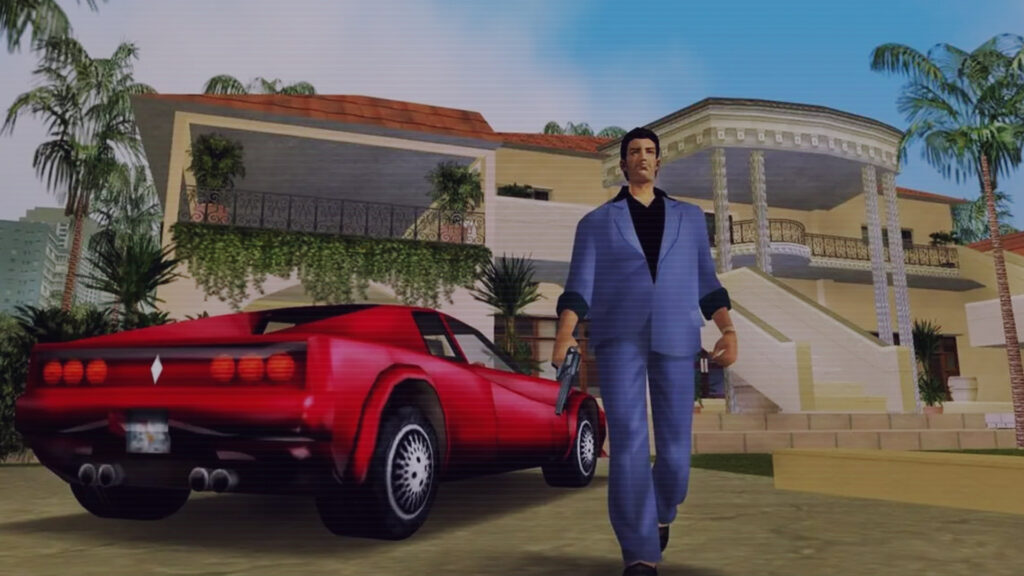
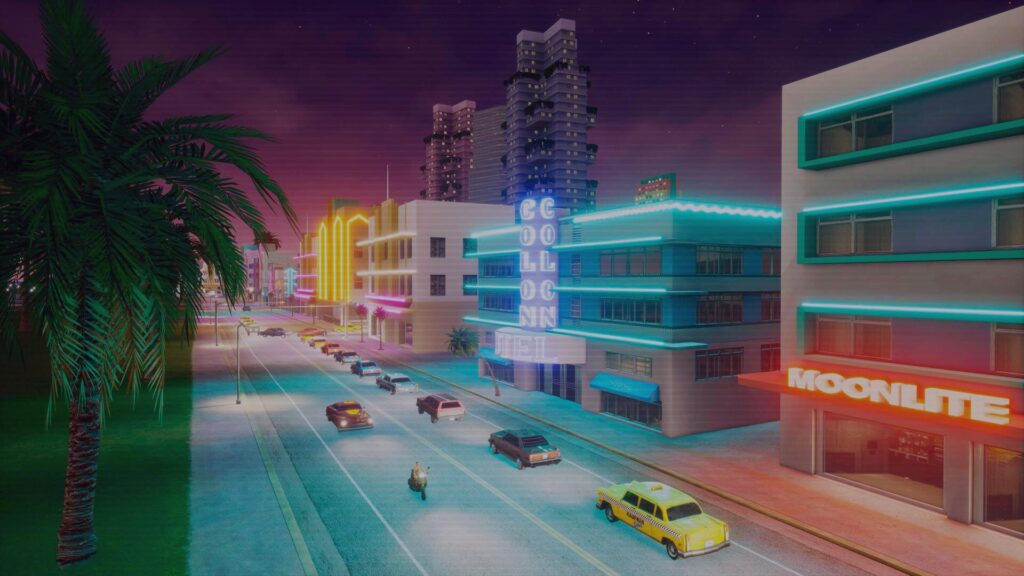
Gameplay improvements included the ability to purchase properties and businesses, expanding the player’s influence in the city. More weapons, vehicles, including motorcycles and helicopters, and a greater variety of side activities made the world feel richer and more interactive. While Vice City didn’t reinvent GTA III’s mechanics, it polished and expanded upon them, delivering a game that felt more cinematic, immersive and most importantly: stylish.
Next in line was GTA: San Andreas in 2004. With San Andreas, Rockstar took a massive leap forward, creating a game that was larger and more ambitious than anything in the series before. Instead of a single city, San Andreas featured an entire state, with three major cities—Los Santos (Los Angeles), San Fierro (San Francisco), and Las Venturas (Las Vegas), as well as vast countryside, deserts, and even a mountain range. The sheer scale of the game made it one of the largest open worlds of its time. For the first time, Rockstar introduced RPG-style mechanics, allowing players to customize protagonist Carl “CJ” Johnson in ways never seen before. CJ could gain or lose weight, build muscle, learn new fighting styles, and improve skills like driving and shooting. The game also featured gang warfare, where players could take over territories, making the world feel more reactive and dynamic.
The narrative was heavily inspired by 1990s hip-hop culture, gang conflicts, and films like Boyz n the Hood, giving it a distinct identity within the series. San Andreas introduced more complex side activities, from casino gambling to skydiving, making the world feel more alive than ever. In many ways, San Andreas represented the peak of the classic GTA era, delivering an expansive, varied, and deeply engaging experience. It pushed the limits of what open-world games could do, setting new expectations for the industry. After the over-the-top scale and freedom of San Andreas, Rockstar took a different approach with Grand Theft Auto IV, shifting the series toward a more realistic and narrative-driven experience. Released in 2008 for the PlayStation 3 and Xbox 360, GTA IV introduced a new game engine, more advanced physics, and a reimagined Liberty City that felt denser, more detailed, and more immersive than ever before.
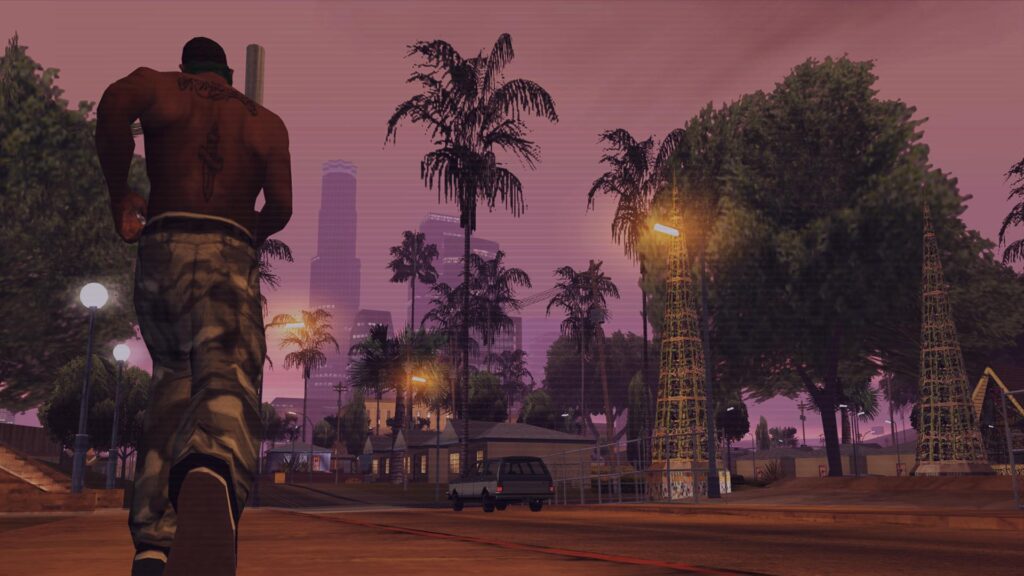
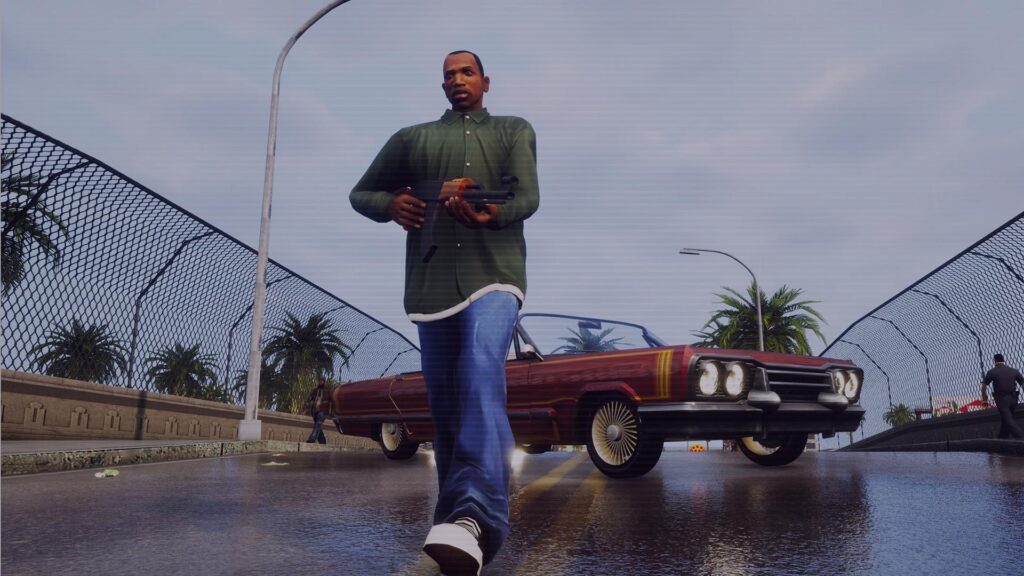
Unlike its predecessors, which often had exaggerated action and arcade-like mechanics, GTA IV aimed for a grittier and more grounded tone. Players took on the role of Niko Bellic, an Eastern European immigrant navigating the criminal underworld while dealing with themes of revenge, loyalty, and the American Dream. The story was more character-driven, with a stronger focus on moral choices, relationships, and consequences. One of GTA IV’s biggest innovations was its advanced physics and AI, powered by the RAGE engine and Euphoria physics system. This allowed for realistic car handling, more reactive NPCs, and dynamic animations, making the world feel more lifelike. Gunfights were more tactical, with a cover system that emphasized strategy over chaotic run-and-gun combat.
However, the shift toward realism also meant some of the more exaggerated features from past games were removed. Players could no longer customize their character’s physique, and there were fewer over-the-top activities like jetpacks or gang wars. Some fans missed the freedom and variety of San Andreas, but others appreciated GTA IV’s more mature storytelling and atmospheric world. Despite some mixed reactions from longtime players, GTA IV was a technical marvel and received widespread critical acclaim. It set new standards for open-world realism, but was merely laying the groundwork for what Rockstar would accomplish with the release of GTA V.
By the time Grand Theft Auto V was released in 2013, the series had already cemented itself as one of the most important franchises in gaming. But Rockstar wasn’t content with just refining past ideas—they wanted to redefine what an open-world game could be. With GTA V, they created their most ambitious and technically advanced game to date, offering a sprawling, highly detailed world, an innovative multi-protagonist system, and an online component that would change the industry forever.
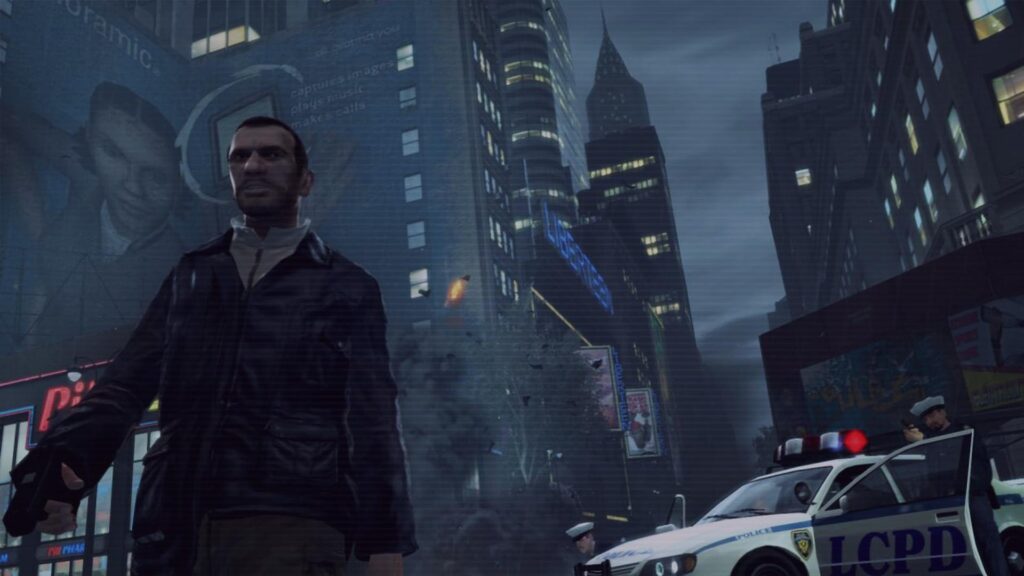

One of GTA V’s most impressive achievements was its open world. The game took players back to Los Santos, now fully realized in stunning detail, alongside the surrounding countryside of Blaine County. The world was bigger, more dynamic, and more immersive than anything Rockstar had created before. Unlike past games, which primarily focused on urban environments, GTA V included mountains, deserts, forests, and even an underwater ecosystem, giving players an incredibly diverse playground. The level of detail was unmatched: NPCs had their own daily routines, wildlife roamed freely and the city felt more alive than ever. Whether players were walking through the streets of downtown Los Santos, hiking up Mount Chiliad or exploring the ocean floor, the world felt immersive and real.
A defining feature of GTA V was its multi-character structure. Instead of a single protagonist, Rockstar introduced three playable characters: Michael De Santa, a retired bank robber living a dysfunctional life in luxury, Franklin Clinton, a young hustler trying to escape gang life and make a name for himself and Trevor Philips, an unpredictable, violent drug dealer with a chaotic personality. Each character had their own distinct storyline, personality, and skill set, making them feel unique. Players could switch between them at almost any time, allowing for varied perspectives on the game’s missions and world. This system also led to some of GTA V’s most exciting moments: missions that seamlessly transitioned between characters, creating cinematic set pieces unlike anything seen before in the series.
While GTA IV focused on realism, GTA V brought back the freedom and variety that players loved in San Andreas. The game featured a wide range of activities, from scuba diving and hunting to stock market trading and real estate investments. Players could once again customize their characters with clothing, tattoos, and haircuts, adding more personality to their gameplay experience. Driving mechanics were also refined, making cars feel more responsive and fun to control, compared to GTA IV’s heavier, weightier handling. Gunplay was vastly improved, with a better cover system, smoother aiming mechanics, and more weapon customization options. The addition of heist missions, which allowed players to plan and execute complex robberies, added another layer of depth.
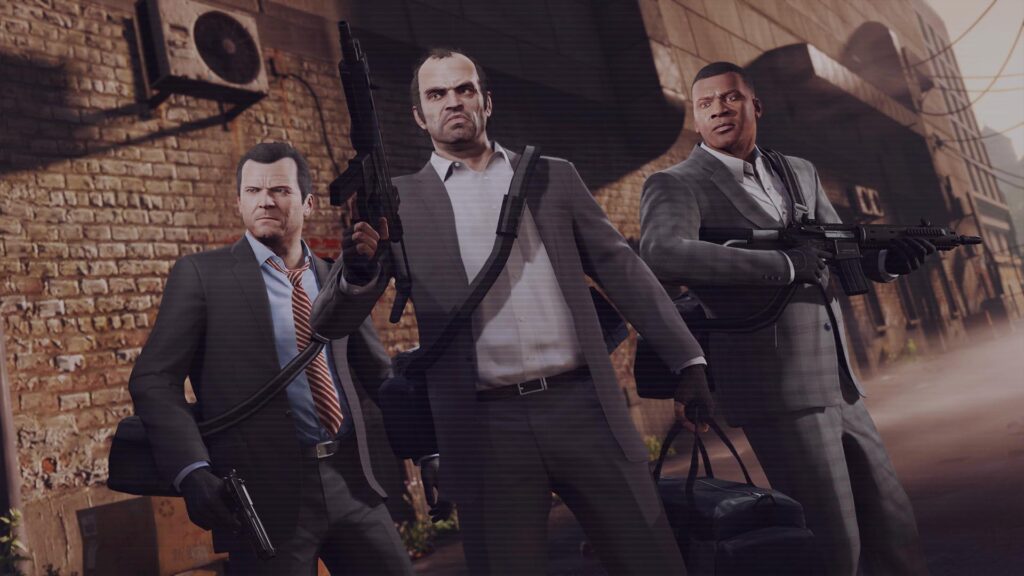
One of GTA V’s biggest innovations wasn’t in its single-player mode but in its online multiplayer component: Grand Theft Auto Online. Released shortly after the main game, GTA Online was designed as a persistent online world, where players could create their own character, complete missions, buy properties, and engage in competitive or cooperative activities. Over time, GTA Online became a massive success, with Rockstar continuously adding new content, vehicles, businesses, and heists. What started as an online extension of GTA V evolved into a standalone, ever-expanding platform, generating billions of dollars in revenue through in-game purchases and content updates.
Grand Theft Auto V became one of the best-selling video games of all time, surpassing 190 million copies sold as of 2024. It remains one of the highest-grossing entertainment products in history, earning more than $8 billion in revenue. Beyond its financial success, GTA V left a lasting impact on game design, storytelling, and player expectations. It refined the open-world formula that Rockstar had been perfecting since GTA III, setting a new benchmark for detail and interactivity. The game also influenced how developers approach long-term content support. Before GTA Online, most multiplayer modes were designed with a limited lifespan. However, Rockstar’s continuous updates, live events, and evolving gameplay model reshaped the industry, inspiring games like Fortnite, Destiny, and Red Dead Online to adopt a long-term service approach.
Another major shift was in player-driven storytelling. While GTA V had a strong main narrative, GTA Online allowed players to shape their own criminal empire, form alliances, and engage in roleplaying communities. This led to an explosion of user-generated content, with many YouTube channels and Twitch streamers using GTA Online as a platform for entertainment, leading to a new era of roleplaying servers and virtual economies. An important part of GTA Online’s longevity has been FiveM, a popular mod framework that allows players to create custom multiplayer servers separate from Rockstar’s official servers. These servers have enabled roleplaying communities, custom game modes, and extensive modifications, turning GTA V into a platform for unique social experiences. Recognizing its impact, Rockstar officially acquired the team behind FiveM in 2023, possibly signaling a potential integration of similar community-driven multiplayer features in GTA VI’s online mode.
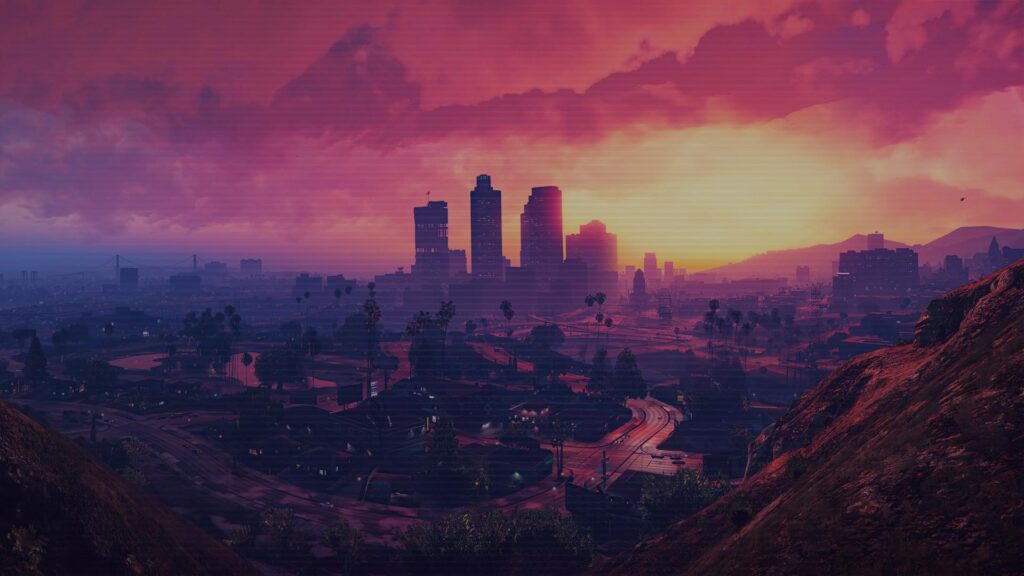
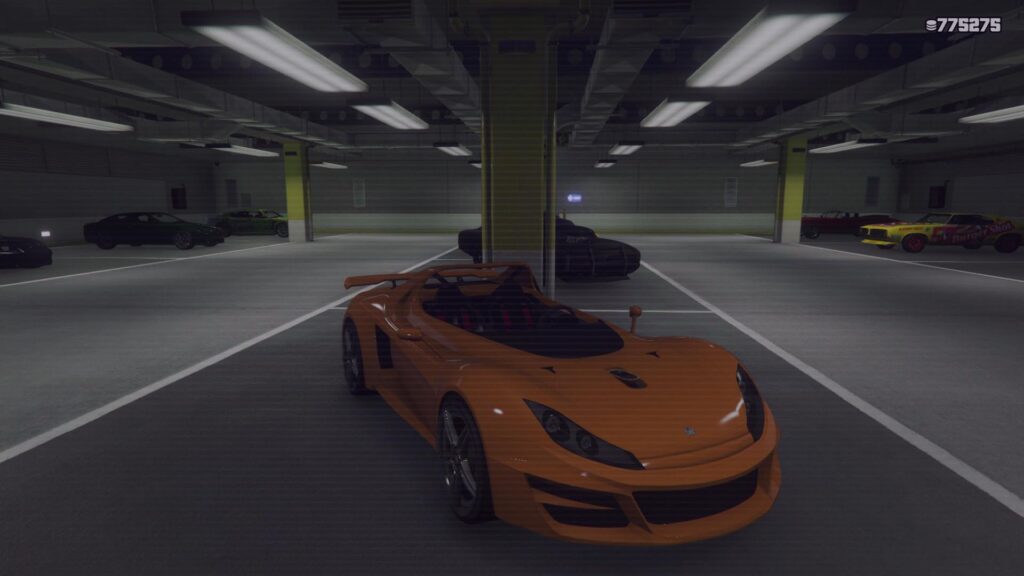
With Grand Theft Auto V dominating the industry for over a decade, anticipation for Grand Theft Auto VI naturally is at an all-time high. Rockstar has officially confirmed that GTA VI will launch in late 2025, targeting PlayStation 5, Xbox Series X/S and PC, although the latter is expected to be delayed a couple of months for technical optimisation and polishing. While the game is still nearly a year away, the details that have emerged suggest that Rockstar ─ again ─ is aiming to push the boundaries of open-world design, storytelling and gameplay mechanics once more.
One of the biggest changes is the game’s setting. GTA VI takes place in Leonida, a fictionalized version of Florida, with Vice City—Rockstar’s reimagining of Miami—returning as the primary location. However, early reports indicate that the map will be significantly larger than previous games, featuring diverse landscapes beyond the city, including rural areas, swamps, and small towns. If true, this would mark one of the most expansive environments Rockstar has ever built. The game will introduce two playable protagonists, with Lucia confirmed as the first female lead in GTA history. Her story is said to be inspired by Bonnie and Clyde, focusing on a criminal duo navigating Vice City’s underworld. This suggests that Rockstar will continue its tradition of strong narrative-driven gameplay, blending character-driven storytelling with its signature open-world freedom.
















